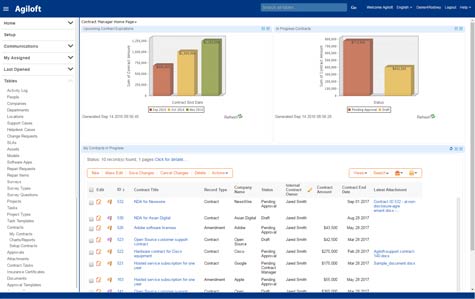When it comes to applications these days, most IT organizations would prefer as much flexibility as possible. In an ideal world, they should be able to consume a packaged application that they could deploy on premise or in the cloud, as they see fit. Of course, in the very next breath, they might want to build an application themselves.
Aiming to provide IT organizations with that kind of flexibility, Agiloft first built a code generator in Java that makes it possible to build applications without writing any code. Then Agiloft decided to build a suite of applications and bundle it with that code generator. Today Agiloft furthered that strategy by announcing it has updated the Contract Management Suite of applications in a way that streamlines approval processes, adds support for version control, and reduces time spent on repetitive tasks such as file uploading.
Agiloft CEO Colin Earl says Agiloft decided to include the code generator it uses to build applications with its offerings to make it simpler for IT organizations to craft business processes without necessarily having to hire developers. The applications that Agiloft provides are meant to automate fairly common processes such as contract management. But, Earl says, IT organizations should be able to employ the Agiloft code generator to create their own custom applications as they see fit.
Earl says the Agiloft code generator is different than previous generations of code generators because it was built on the assumption that faster processors sporting more memory would be fairly commonplace right about now.
“Our assumption was that 8GB of RAM would be readily available,” says Earl.
As a result, Earl says, it becomes feasible to generate rich extensible applications using code generators that enable IT organizations to create those applications using a graphical interface that requires no coding writing expertise.
Today, most IT organizations are confronted with a limited number of options when it comes to applications. They can either buy a packaged application and try to customize it as much as possible to fit their needs or build an application from the ground up, assuming they can find the developer talent needed to get it right. Most IT organizations wind up doing both. In essence, Agiloft is saying that’s what most organizations are going to do anyway. As a result, Earl says, it’s incumbent on the vendor to make crafting a hybrid application environment that fits their specific requirements as straightforward as possible.
There’s little doubt that code generators have not lived up to expectations in the past. But given the growing size of the application development backlog inside most organizations, the time may have finally come to give this automated approach to building applications a second look.




